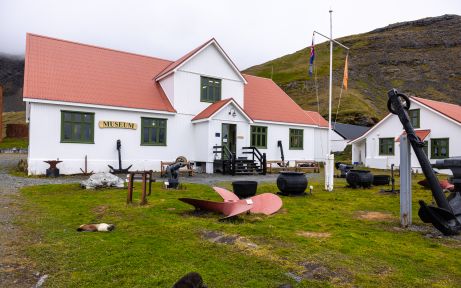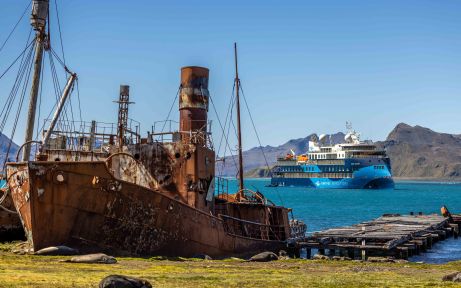Exciting changes are on the way!
As part of our merger with Polar Latitudes, we’re refreshing key elements of our website to reflect this new chapter. Discover more in our latest news update.
Join our expedition voyages to the Galapagos of the South, the wildlife paradise of South Georgia, deep in the wild Southern Ocean
Over a thousand miles from the South American mainland and a similar distance from Antarctica, the rugged peaks of South Georgia pierce the moody skies of the Southern Ocean. While several ships had sighted the island in the 1600s, legendary explorer Captain James Cook was the first to land on South Georgia, which he named for King George III.
Once a base for the whaling industry, this magnificent isle has been reclaimed by nature. Reserved for scientific research and wildlife, South Georgia is not only home to staggering natural beauty, but holds some of the greatest concentrations of wildlife on the planet with huge numbers of seals, whales, seabirds, and millions of penguins. Formerly part of the Falkland Islands (Malvinas) the island and its surroundings were designated as a British Overseas Territory in 1985.
Area of South Georgia
Population of South Georgia
Facts about South Georgia
- Mount Paget is the highest point on South Georgia, reaching 2,934m. This makes it the highest mountain on British Territory, more than twice the height of Ben Nevis!
- Once politically part of the Falkland Islands (Malvinas), South Georgia has been its own British Overseas Territory since 1985. The small research station of King Edward Point next to the abandoned whaling station of Grytviken is the de facto capital. This makes it the smallest 'capital' in the world, with only around 12 people in winter. In practice, the two territories continue to be intimately linked, with all supplies and personnel passing through the Falklands en route to South Georgia. The role of Commissioner of South Georgia is held by the Governor of the Falkland Islands, based in Stanley.
- Brown rats were accidentally introduced to the island during the whaling and sealing eras; local bird life had no defense against these invaders, and many species were brought to the brink of extinction. An ambitious program using bait distributed by helicopter has since eradicated the rats - one of the most successful and ambitious habitat restorations in history!
- Sovereignty of South Georgia (known in Spanish as Isla San Pedro) is disputed between Argentina and the United Kingdom. This situation culminated in the Falklands War between Argentina and the United Kingdom in 1982, which included conflict on South Georgia itself. While the War resulted in a British victory, Argentina continues to claim the islands; the claim to the Falkland Islands (Malvinas) and South Georgia and the South Sandwich Islands (Islas Georgias del Sur y Sandwich del Sur) is inscribed in Article 1 of the Argentine Constitution.
- Antarctica
- South Georgia






